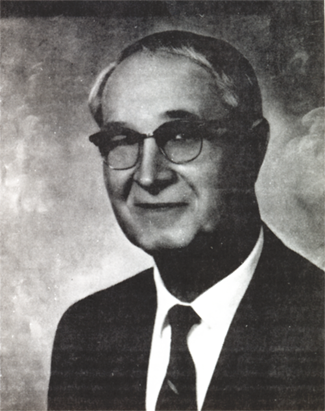A Community Planned for Growth
The most lasting and important accomplishment of the first council and mayor was the beginning of long-range planning. Many communities are not planned. They grow in haphazard fashion, often outstripping the basic services the town had put in only a few years before. There is no clear idea of what the town will look like in ten, fifteen, or twenty years.
That was not the case with the first council and particularly with Rudy Bechtold. The mayor felt that Pleasant Hill was a community that would grow, and that the people who were there in 1956 should anticipate that growth and plan for it. That was a big reason that on August 6 the council hired Anderson Engineering Company of Des Moines. Anderson's job was to suggest city zoning ordinances and subdivision regulations and to "prepare an overall town plan for the orderly growth and development of Pleasant Hill."
On September 3, 1957, Anderson Engineering submitted to the council a 61 -page book entitled “Pleasant Hill -- A Comprehensive Plan 1957.", Anderson's first recommendation was the establishment of a planning and zoning commission since state law required one. The rest of the report was basically a study of the current uses of land and suggestions for further uses.
The report gives an indication of what Pleasant Hill was like in the first two years of its existence. There were 89 houses, most of which were located North of Runnells High Line Road (today's Parkridge Drive). Two of the largest industries of Polk County -- Ipaco and the Great Lakes Pipeline Company tank farm -- were located in the southern part. Over 76% of the town's land was vacant or used for agriculture, while only about 6% was residential. The rest of the land was divided into industrial (10.5%), public and semi-public (0.5%), streets and alleys (3.6%), railroads (2.9%), and commercial (0.1%).
Population growth was of major importance in the Anderson report. All of the other land use plans were based on the prediction that Pleasant Hill would grow. Factors such as nearness to Des
The conclusion of the report is significant since the first council and mayor, and all the others that followed, have maintained a strict adherence to the premise. Anderson said that, “an ideal situation exists whereby the maximum advantage of town planning in advance of need could be realized. The potential for a well planned and developed community is indeed great."
In November of 1957, elections took place for mayor and town councilmen. Provision had been made (and is still adhered to today) that all elected officials serve two-year terms. Taking office on January 1, 1958 were Ernie M. Voshell as mayor and councilmen Joe Pierick, Charles Vance, Carl Christenson, Alvin Peterson, and Murry Witzenburg. Mayor Voshell and councilmen Vance and Christenson were new to running the town.

January 1958 to December 1961